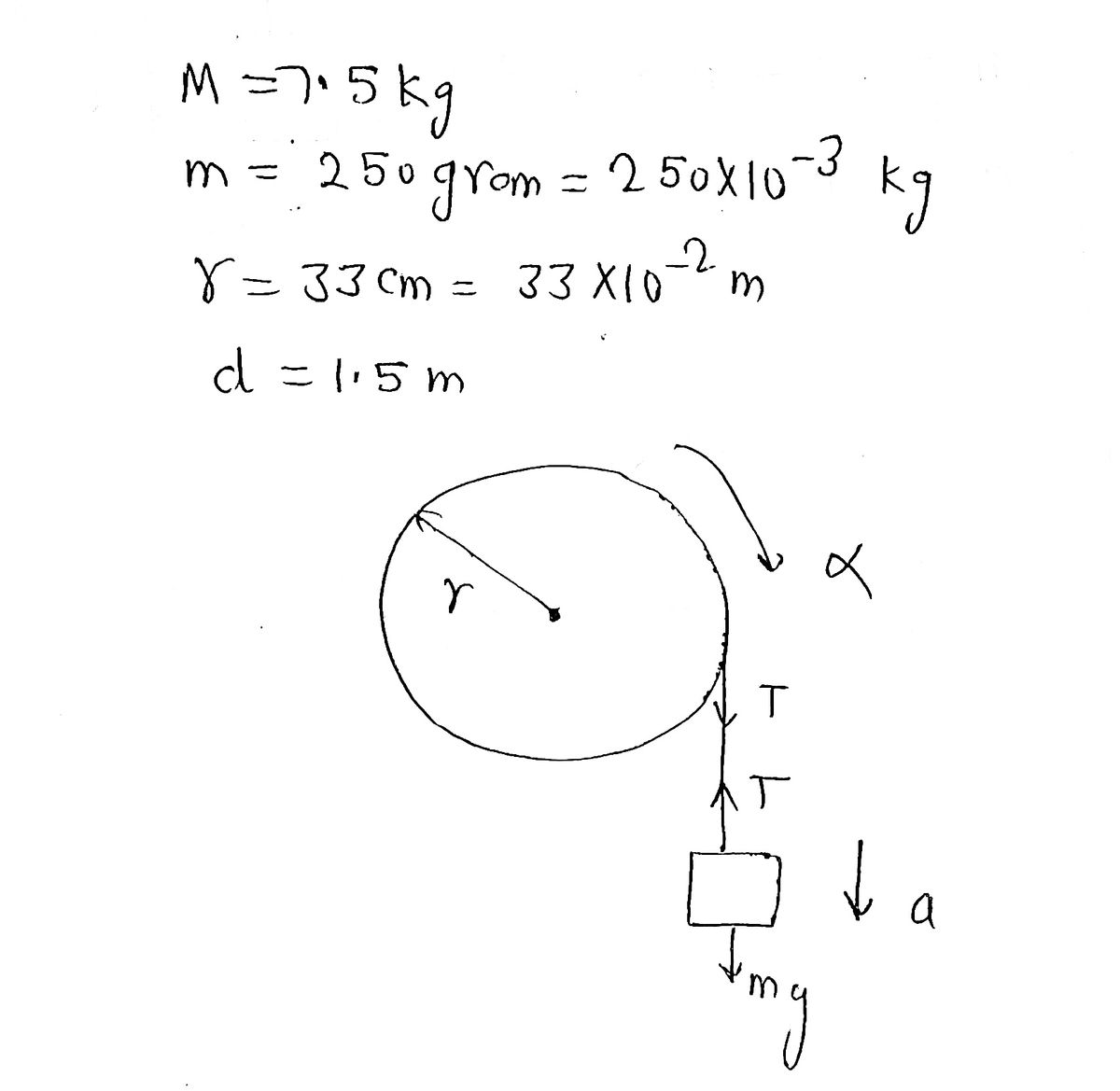A bicycle wheel of mass M (all at the edges) and radius r is fixed about an axis through its center and is initially at rest. You wrap the wheel with a cord and attach a hanging weight of mass m to the cord. You release the weight and allow it to fall a distance d. The weight falls smoothly, and the cord does not slip over the wheel as it unwinds. a. Write an expression for the angular acceleration a of the wheel in terms of the tension T of the cord. b. Write an expression for the linear acceleration a of the weight in terms of the tension T of the cord. C. Using parts (a) and (b) find the linear acceleration in terms of M, m, and g. d.Write an expression for the linear speed v of the weight after it falls
Angular Momentum
The momentum of an object is given by multiplying its mass and velocity. Momentum is a property of any object that moves with mass. The only difference between angular momentum and linear momentum is that angular momentum deals with moving or spinning objects. A moving particle's linear momentum can be thought of as a measure of its linear motion. The force is proportional to the rate of change of linear momentum. Angular momentum is always directly proportional to mass. In rotational motion, the concept of angular momentum is often used. Since it is a conserved quantity—the total angular momentum of a closed system remains constant—it is a significant quantity in physics. To understand the concept of angular momentum first we need to understand a rigid body and its movement, a position vector that is used to specify the position of particles in space. A rigid body possesses motion it may be linear or rotational. Rotational motion plays important role in angular momentum.
Moment of a Force
The idea of moments is an important concept in physics. It arises from the fact that distance often plays an important part in the interaction of, or in determining the impact of forces on bodies. Moments are often described by their order [first, second, or higher order] based on the power to which the distance has to be raised to understand the phenomenon. Of particular note are the second-order moment of mass (Moment of Inertia) and moments of force.

Trending now
This is a popular solution!
Step by step
Solved in 5 steps with 5 images









